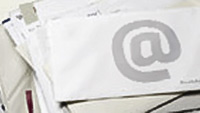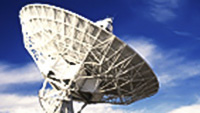Search and order online
Operating a rover from space – Analog-1
- Video Online only
- Title Operating a rover from space – Analog-1
- Released: 21/11/2019
- Length 00:01:00
- Language English
- Footage Type Music Clip
- Copyright ESA - European Space Agency
- Description
ESA astronaut Luca Parmitano took command of a rover in the Netherlands on 18 November 2019 and expertly drove it over an obstacle course to a sampling site and collected a rock – all while circling our planet at 28 800 km/h in the International Space Station.
This test was the first in a series to prove the technology ESA has developed to operate rovers from afar. Called Analog-1 the test could hardly have gone any better. Given one hour of precious astronaut time, Luca ticked all the boxes for the exam in less than half an hour.
Robots can be fitted for special tasks and go places where no humans can go, but nothing beats our quick and adaptive thinking and the human touch. The Analog-1 rover is equipped with force feedback so astronauts can feel what the robot feels and adjust grip accordingly on a joystick that allows for six degrees of motion.
ESA’s exploration strategy foresees astronauts controlling robots from orbit around the Moon or Mars or from inside a planetary base.
A week later all elements of the overarching Meteron project will be put to the test. Luca will drive the robot to three sites in the hangar in the Netherlands and decide in collaboration with a science team based at the European Astronaut Centre in Cologne, Germany, which rocks to pick up and keep for later analysis.
This experiment is as authentic as possible using the International Space Station as a stand-in for a lunar gateway and the hangar made to resemble a lunar landscape. Whereas the first “proficiency run” was used to test the systems and Luca had to follow a determined path, next week he will be more free to explore to meet the objectives set up by the science team at the European Astronaut Centre.
The same science software designed for guiding the ExoMars rover mission on the Red Planet will be used that allows the science team to indicate sites of interest as well as overlay dangerous areas that are beyond the limits of the rover’s capabilities.
The Analog-1 experiment is proving the value of human-robotic cooperation in space and demonstrating the technology that will be used as the basis for many of ESA’s exploration projects.


